Nordic cuisine boasts a variety of flatbreads ranging from pillowy soft to cracker-like in texture. This delightfully soft and slightly chewy version hails northern Sweden where it is known as tunnbröd (literally "thin bread") or sometimes Polar Bread. Usually made from some combination of wheat, barley and/or rye flour, tunnbröd is traditionally baked quickly in a hot wood-fired oven.
This recipe for tunnbröd is a slight variation on the original : a simple yeast dough is studded with fresh garden herbs, rolled thin and cooked quickly in a hot cast iron skillet. The result is perfectly soft, herby flatbreads perfect for dipping or or wrapping around something delicious. Ready to get started? Keep reading for step-by-step instructions for making tunnbröd with garden herbs at home.

Why This Recipe Works
- The dough comes together easily and rises for just an hour before it's ready to roll out;
- Several key ingredients and techniques help keep the flatbreads soft and pliable; and
- The flatbreads cook QUICKLY in a hot skillet....only 1 minute per side!
The Ingredients

- Bread flour provides the gluten structure for the tunnbröd.
- Barley flour brings a subtle nutty sweetness to the bread and very little gluten which helps keeps these flatbreads tender and soft.
- A bit of skyr or greek yogurt and a little canola oil also contribute tenderizing qualities.
- Rosemary and/or thyme bring a welcome fresh, herbal flavor.
- Instant yeast serves as the leavener for the flatbreads. Please note that instant or rapid rise yeast and active dry yeast are two different things. The essential difference between the two is that instant yeast can be mixed right in with the dry ingredients whereas active dry yeast is designed to be proofed in warm liquid prior to adding it to the recipe. Instant yeast is also more reliable, effective and fast-acting.
- After they come off the skillet, each flatbread is brushed with melted butter and sprinkled with flaky sea salt for added softness and flavor.
The Equipment
To make tunnbröd you will need the following:
- A stand mixer (you can also knead the dough by hand if you prefer).
- Cast iron or other heavy skillet
- Rolling pin
- Notched rolling pin (known as a kruskavel) OR a fork or skewer. NOTE: Due to the current lumber shortage, this notched rolling pin is out of stock. Please use the fork or skewer method until it becomes available again.
- Dough scraper to help ease the dough rounds off of the counter after you roll them out.
- Turner for flipping the breads in the pan.
- Small brush for brushing each flatbread with butter.
How to Make This Recipe
- Whisk the dry ingredients together by hand in the bowl of a stand mixer.
- Add the skyr or yogurt, water and oil. Mix on medium low with the dough hook until everything comes together. Increase the mixer speed to medium and continue kneading the dough for three minutes. Add the chopped fresh herbs and knead for 2-3 more minutes. The dough should not be sticking to the sides or the bottom of the mixer by the time you are finished kneading.


- Transfer the dough to an oiled bowl and cover with plastic wrap. Let it rise at room temperature for an hour.


- Divide the dough into eight equal pieces. Work with one piece at a time keeping the remaining pieces covered with plastic wrap while you work.
- Roll each piece into a thin circle on a lightly floured work surface. Roll with the notched rolling pin or prick all over with skewer or fork. Gently use a dough scraper and your fingers to carefully remove the dough from the counter.



- Transfer the dough round to a heated cast iron skillet that has been lightly coated with oil. Cook over medium heat for one minute. Flip and cook for one minute more.


- Transfer to a plate. Brush with melted butter and sprinkle with flaky sea salt. Repeat with the remaining pieces of dough, stacking one flatbread on top of the other when they are finished and keeping them covered with a clean kitchen towel as they cool.


- Enjoy while they are warm OR let them cool completely and freeze. Reheat as desired in a 425 degree oven for 3-5 minutes.

Expert Tips
- The dough should be tacky but not sticky with not too much flour. When the kneading process is completed, the dough should not be sticking to the sides or the bottom of the bowl. It should not be overly dry either. If you need to add additional flour in order to keep the dough from sticking to the bowl during the kneading process, do so one tablespoon at a time. Too much flour will make tough flatbreads.
- Use as little flour as possible when rolling out the dough. This might sound crazy, but I like to allow the dough to stick to the counter as I'm rolling it out. This allows me to get a nice thin flatbread and use as little flour as possible (which, as we just learned above, helps create a more tender flatbread). If you want to roll your dough without too much flour, you must use a dough scraper to help you release it from the counter. If the dough is sticking to the rolling pin, you will need to sprinkle a little additional flour on top to prevent that from happening.
- Use a kruskavel to create small divots in the dough prior to cooking. This traditional Scandinavian bread baking tool (basically a spiky rolling pin) helps keep the flatbread thin and prevents it from puffing up while it's cooking. Alternatively, use a skewer or a fork to poke holes in the dough. It won't give you that characteristic Nordic flatbread look but it will do the job.
- Monitor the temperature of and amount of oil in your skillet. You may need to adjust the heat downward if the skillet is becoming too hot, and you might even choose to turn the heat off in between each flatbread depending on how long it takes for you to roll each one out. You may also need to add more oil as you go along if the skillet becomes completely dry (I wipe out any excess oil with a paper towel).
- Cover the breads in a clean kitchen towel as they are cooling. This helps trap moisture and keep your flatbreads soft.
- If you aren't eating them right away, freeze the flatbreads. I like to wrap them individually and just take them out as I need them. Warm them in a 425 degree oven for a few minutes and they are ready to enjoy!

FAQS
This delightfully soft and slightly chewy flatbread hails northern Sweden where it is known as tunnbröd (literally "thin bread"). Usually made from some combination of wheat, barley and/or rye flour, tunnbröd is traditionally baked quickly in a hot wood-fired oven.
You can substitute rye, whole wheat or spelt for the barley flour.
Dip it into your favorite hummus or other dip or serve it alongside a hearty soup or stew. Tunnbröd makes excellent wraps! Pile your favorite ingredients inside and enjoy. For a very traditional Swedish use of tunnbröd, make tunnbrödsrulle: tunnbröd wrapped around a hot dog, mashed potatoes, shrimp salad, crispy onions, ketchup and mustard. I like to keep that concept a bit simpler and wrap a grilled sausage inside the tunnbröd with a generous scoop of Nordic Red Cabbage Slaw.
If you don't plan to enjoy them immediately, store them in a tightly sealed freezer bag or similar freezer-safe container in the freezer. Heat them in a 425 degree oven for 3-5 minutes to reheat.
Related Recipes
Looking for other delicious Scandinavian flatbread recipes? I've got several here for you to try:
I hope you enjoy this herbed variation of tunnbröd! It's one of my favorites.
Recipe

Soft Swedish Flatbreads with Garden Herbs (Tunnbröd med Trädgårds Örter)
Ingredients
- 2 cups bread flour plus an extra tablespoon or two if necessary and more for rolling the dough
- ¾ cup barley flour
- 1 ½ teaspoons instant yeast
- 1 teaspoon fine sea salt
- 1 teaspoon granulated sugar
- 1 cup water room temperature
- ¼ cup plain whole-milk 4% milkfat skyr or Greek yogurt
- 1 tablespoon canola oil plus more for oiling the bowl and cooking the flatbreads
- 2 tablespoons chopped fresh herbs such as rosemary and/or thyme
- 2 tablespoons unsalted butter melted
- Coarse salt for sprinkling
Instructions
- Whisk bread flour, barley flour, yeast, salt and sugar together by hand in the bowl of a stand mixer.
- Add water, skyr and 1 tablespoon oil to the dry ingredients.
- Fit a stand mixer with the dough hook attachment and begin mixing at medium-low speed until the dough just comes together. Increase the mixer speed to medium and knead dough for three minutes. Stop the mixer and add the chopped fresh herbs. If the dough is sticking to the sides or the bottom after the first 3 minutes of kneading, add an additional tablespoon of bread flour before continuing the kneading process. Continue kneading at medium speed until the dough is tacky but not sticky and clears the bottom and sides of the bowl, approximately 2-3 more minutes. Add an additional tablespoon or two of bread flour if dough continues to stick to the sides or bottom of the bowl during the kneading process.
- Transfer the dough to an oiled bowl. Cover and let rise for an hour at room temperature or until doubled in size.
- Transfer dough to a clean countertop and divide into 8 equal pieces. Roll each piece into a rough ball. Cover with plastic wrap.
- Add a teaspoon or so of canola oil to a 12-inch cast iron skillet. Heat over medium heat.
- Working with one piece of dough at a time, use a rolling pin to create a thin circular flatbread (like a thin tortilla). If the dough sticks to the rolling pin, sprinkle a little flour on top. It’s okay if the dough is sticking to the work surface.
- Finish by rolling the flatbread a couple of times with a kruskavel or poking it at 1 inch intervals with a skewer. Brush off any excess flour from the top of the dough.
- Using a dough scraper and your fingers, gently release the flatbread from the countertop.
- Wipe the oil from the skillet with a paper towel so that only a thin film remains. Transfer the dough round to the hot skillet. Cook for one minute or until brown and spotty on the first side. Flip the bread over with a spatula. Cook for another minute. Remove the flatbread from the skillet and transfer to a plate. Brush lightly with melted butter and sprinkle with coarse salt. Cover with a piece of parchment paper and stack a clean kitchen towel on top. Repeat the process with the remaining portions of dough. I like to turn off the burner in between cooking each flatbread to minimize any smoking of the cast-iron skillet. Simply turn it back to medium and add a little oil as you finish rolling the next flatbread.
- Eat immediately or wrap tightly and freeze once the flatbreads have cooled to room temperature.
Video
Notes
Nutrition
If you loved this recipe, give it a star review! Also, snap a picture of your Soft Swedish Flatbreads with Garden Herbs (Tunnbröd med Trädgårds Örter) and share it with me on Instagram using the hashtag #truenorthkitchen and tagging me @true_north_kitchen.
*This post was updated on August 11, 2020 to include additional helpful information.
*This post contains affiliate links.

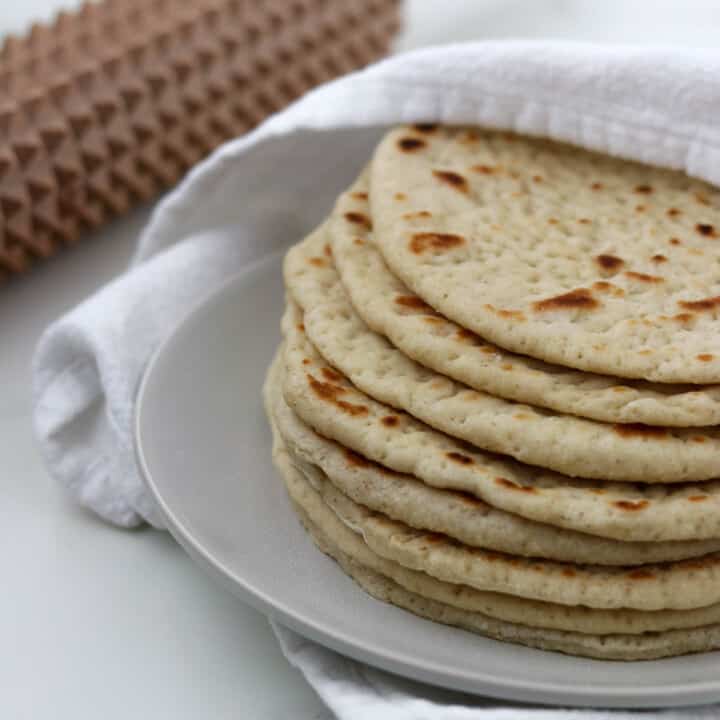
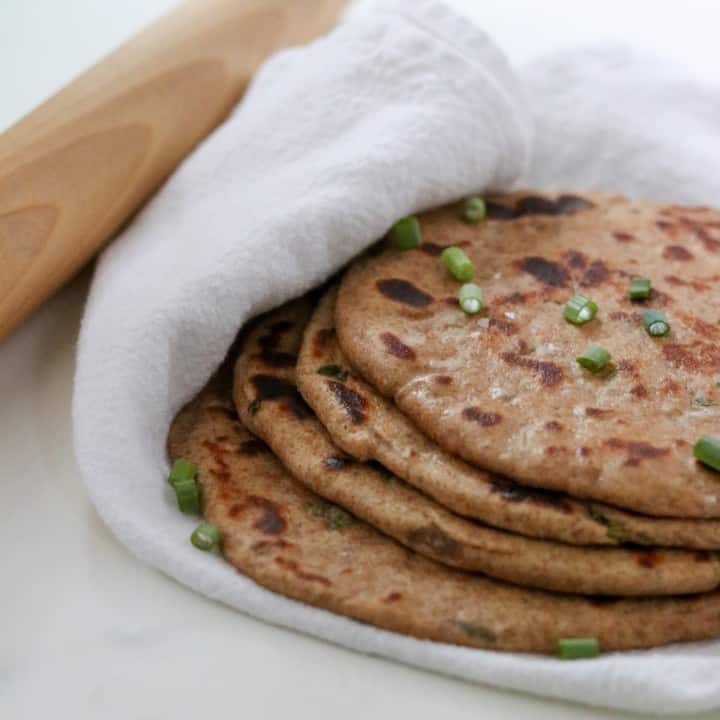
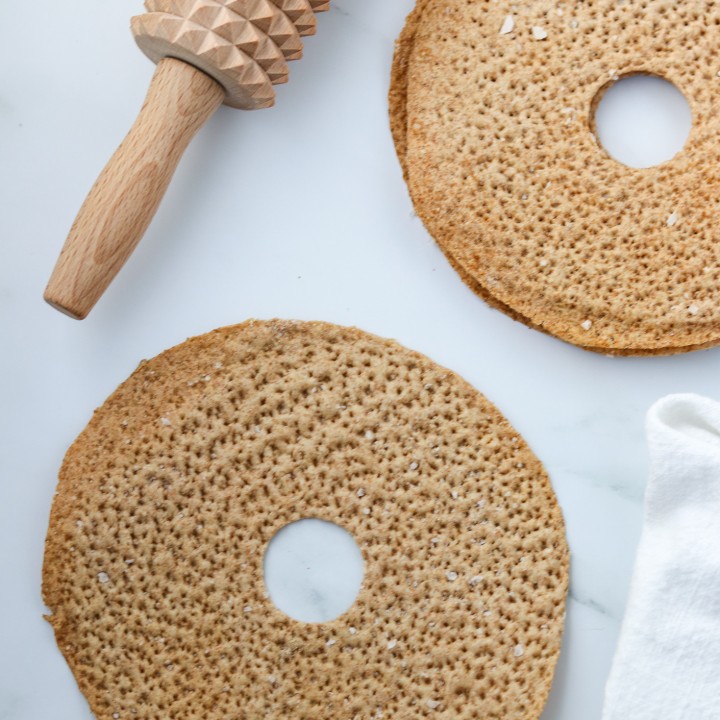


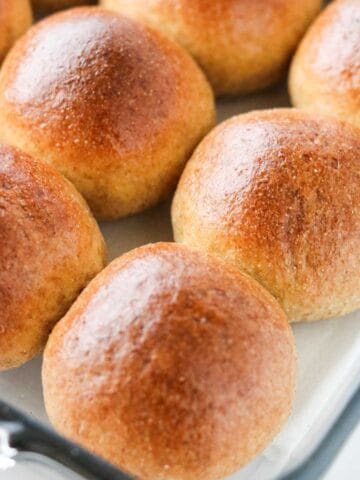
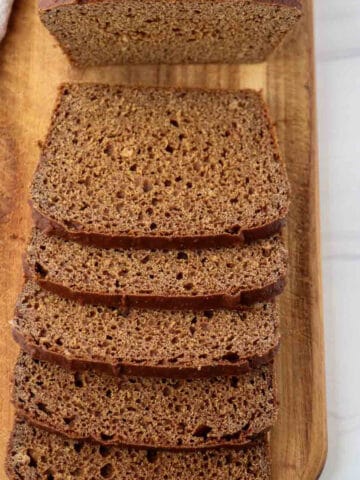
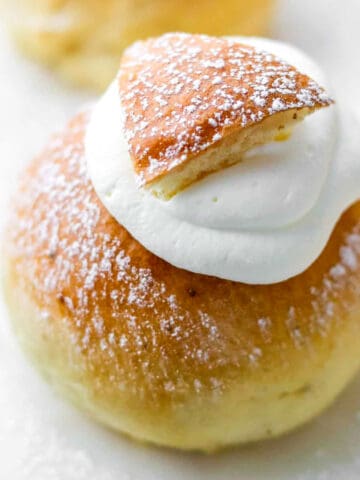
Angelika says
Hi Kristi, I came across your blog. Great work! Interesting content and nice pictures. I followed your blog. I enjoy to read blogs from people around the world and get inspired by other bloggers recipes. I am a food blogger from Canada, and I invite you to visit/follow my blog at: https://zest4foodblog.wordpress.com. Cheers, Angelika
Kristi says
Thank you, Angelika! I stopped by your blog and gave you a follow as well. Your recipes look delicious!